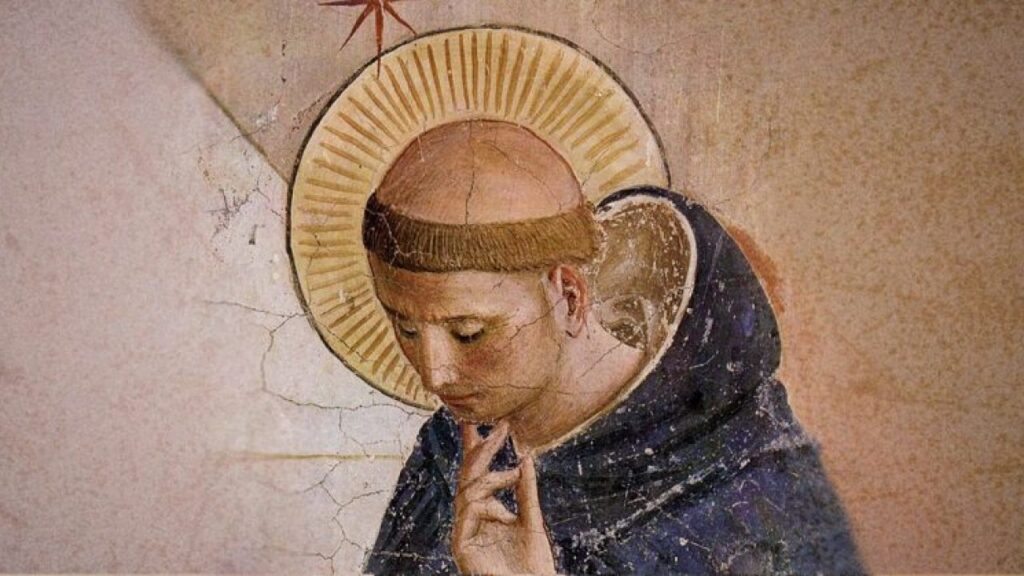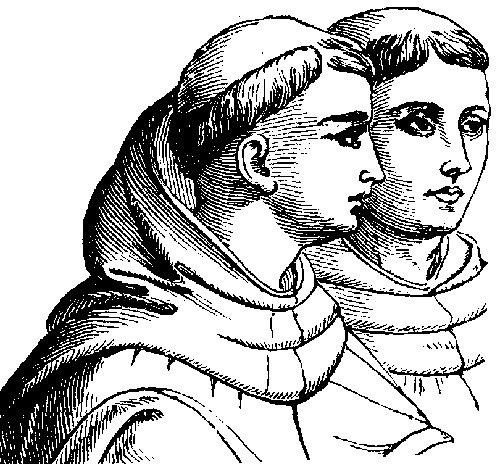Since medieval times, Christian Monks have been shaving their head on top in the way we’ve all come to associate them with.
The style, bald with a brim of hair, is as iconic as their dark brown attire, but what is it that makes Christian Monks adopt this rather unusual, and some would say unflattering, style? Today we’re going to find out.
But first, the basics.

The Tonsure Cut
This style is a form of a tonsure cut, and although it may not be as well-known in name as the crew cut, buzz cut, or fauxhawk, it certainly carries the iconic status – a little ironic for those who
Although symbolic of all Christian worship, the unique haircut is actually one which appears in the Catholic denominations, hence its significant presence in medieval times.
It is also commonly used in the Eastern Orthodox Church for newly baptized members, but this is not as common in contemporary practice.
The style is not regularly seen outside of monasteries these days, but it still exists and holds a significant meaning for those who have it.
The actual cut involves a shaving of the scalp, which, in medieval times, was as unpleasant as it sounds.

Why did monks cut their hair this way?
The tonsure cut began as a practice of cutting or shaving some or all of the hair on the scalp as a sign of religious devotion or humility, where Monks would sacrifice their ego via their hair.
But, you may ask, why not all of the hair? The answer arrives during the crusades, where Christian soldiers would travel the lands to spread the word of God – that’s capital G God, singular.
During this time, they would face off against Muslims in great battles.
In Islam, the faith practiced by Muslims, five “pillars” or values must be adhered to. One is Hajj (the pilgrimage to Mecca).
Many Muslims will shave their heads entirely on their return, so the Monks left a hair ring, not wanting to gain such an association.
Leaving the hair also had some origin in the holy scriptures since the old testament issued a command not to shave the hair around the sides of one’s head.
But why was this a command? What role could it possibly play even before the crusades?
The answer is quite simple, yet also a little odd.
Origins in the Roman Empire
It began with the late Roman empire. The Romans consisted of many varying believers and marked out Monks for easy identification by shaving only the top of the head to allow the hair to grow in the form of a crown.
These were later eras of Romans who had integrated Christianity into their own beliefs and took symbolism as a necessary part of practicing the faith.
This notion of creating a crown is claimed to have originated with Saint Peter and in the practice of the Latin Rite of the Catholic Church most of all.
It seems a little odd to some that men who live such humble lives would be given the crown cut.
Several have argued that this is a distasteful mockery. However, this could not be further from the truth. This is, once again, because of symbolism. The crown does not represent opulence but the spiritual kingship of the Christian, and more specifically Catholic, faith.
St. Germanus I, Patriarch of Constantinople, explained this around 750AD.
“The double crown inscribed on the head of the priest through tonsure represents the precious head of the chief-apostle Peter. When he was sent out in the teaching and preaching of the Lord, his head was shaved by those who did not believe his word, as if in mockery. The Teacher Christ blessed this head, changed dishonour into honour, ridicule into praise. He placed on it a crown made not out of precious stones, but one which shines more than gold, topaz, or precious stone – with the stone and rock of faith”
As you can see, the crown is a blessing and a statement of higher spiritual order, rather than being so much about those precious stones which symbolize material wealth.
However, there is some speculation that this has been taken too literally since the head’s rounding actually meant “around the head.”
Some believe this is all of the head, as in – any part of the head.
For Monks, however, this is taken much more literally. This is often because they are taking God’s directions as accurately to the wordage as possible, and let’s not forget to mention that it has become somewhat of a tradition and expectation even in the modern world.

So, there you have it. Next time, should you be lucky enough to stumble upon such a dedicated member of the Catholic faith, that you see this strange cut you will not see it as something to laugh at but to respect.
It takes great sacrifice, removal of the ego, and a great amount of devotion to the Lord, not only to begin with but to maintain.
Unlike medieval times when shaving was performed with a rather sharp knife that could have easily cut the scalp, there are modern technologies for this practice.
However, many Monks do not use them as they try to remain as true to their Catholic roots from the days Christianity was at its height, embracing God and the sacrifice made for him in his honor. And that is what makes this very odd haircut one that is truly beautiful in many regards.
“You shall not round the edge of your head, nor shall you destroy the edge of your beard.” Leviticus, 19:27
